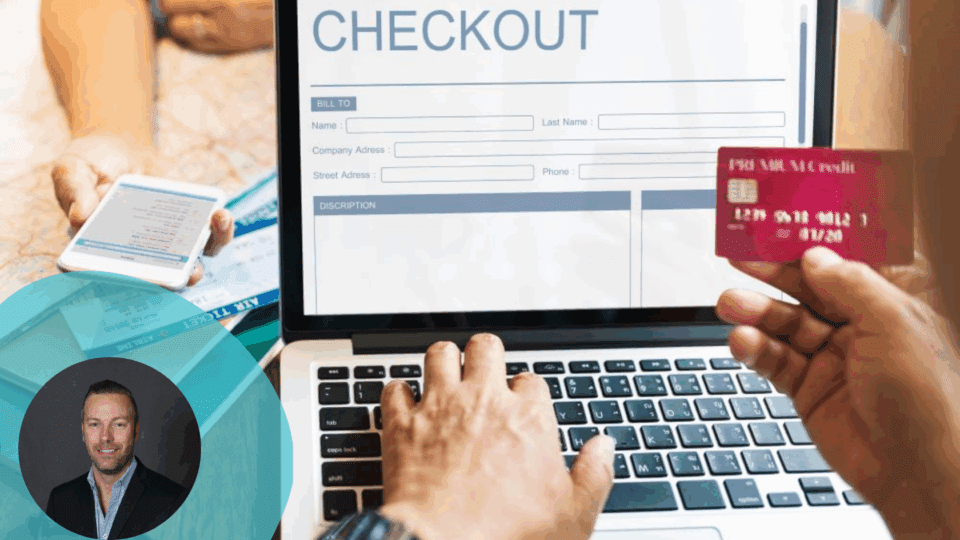In the past few years, retailers have made steady progress across the customer journey. As lines between channels blur, stores are more connected to ecommerce, fulfillment is faster and personalization is improving. But one area continues to underperform: checkout.
The checkout experience often creates unnecessary friction. Long forms, limited payment options and inflexible delivery choices continue to frustrate shoppers, leading to cart abandonment, lost revenue and declining trust.
After analyzing 220 North American specialty retailers, data from the 2025 Unified Commerce Benchmark for Specialty Retail – developed by Manhattan Associates in partnership with Google Cloud and Incisiv – confirms that only 4% of retailers were offering a high-performing checkout experience. Most are still using systems that can’t support today’s modern shoppers’ expectations.
When Checkout Breaks, the Entire Experience Suffers
Today’s shopper moves fluidly across channels. A cart may begin on mobile, continue on desktop and finish in-store. Shoppers expect the same product availability, pricing and cart contents to carry across all touch points. In many cases, they don’t.
Imagine a scenario where a shopper browses on a phone, adds a few items to the cart and returns later on a laptop to complete the purchase. The cart is empty. The shopper restarts the process, only to discover limited shipping options and no ability to change or cancel the order after placing it. The result is a lost sale, and likely a lost customer.
These experiences still happen every day. They show that while checkout needs to be memorable in the retail experience, it continues to remain one of the weakest links. It is often treated as a final step, not as part of a larger, connected process. As a result, shoppers leave before they ever complete the transaction.
What Top-Performing Retailers are Doing Differently
Retailers with stronger checkout performance share a few clear traits.
First, they support real-time cart synchronization across devices. Shoppers can start a purchase on one channel and complete it on another without losing progress. Among the highest-performing retailers, 70% offer this feature. Among others, just 31% do.
Second, top brands enable post-purchase flexibility. Shoppers can change delivery preferences, update contact information or cancel items before fulfillment begins. For many customers, this flexibility is the difference between completing a purchase or abandoning it altogether. Yet only a fraction of retailers offer this option today.
Third, leading retailers use AI to simplify the checkout process. Product recommendations, shipping options and payment flows adjust in real time based on shopper behavior. This leads to faster transactions and increases average order value by as much as 15%.
Operationally, high-performing retailers are using checkout to connect directly with inventory and fulfillment systems. Inventory availability is clear, fulfillment options are dynamic and in-store locations can fulfill ecommerce orders to reduce delivery time and cost. Retailers that enable store-based fulfillment cut last-mile costs by 31% on average, according to the Benchmark.
These improvements may seem small in isolation, but together they help retailers remove friction, recover lost revenue and improve customer satisfaction where it matters most.
Checkout is not Just Payments – It’s an Experience
Too often, checkout is still managed as a technical requirement. It’s seen as a mere transaction, rather than something that can drive growth — a major missed opportunity.
The benchmark found that retailers that move from “developing” to “advanced” checkout maturity can unlock up to $23 million in additional revenue per $1 billion in sales. These gains come from better conversion, lower fulfillment costs and reduced cart abandonment.
Retailers that treat checkout as part of the overall experience, rather than a siloed system, are more likely to retain customers and encourage repeat purchases. The customer remembers how easy or difficult the process was, and that memory shapes their next decision.
It is important to note that improving checkout does not require major transformation. In many cases, small advances can drive big results. Reducing the number of form fields, offering more payment choices and giving customers the ability to modify an order after purchase are practical places to start.
Closing the Gap
Retailers looking to close the gap should prioritize a few core areas: real-time cart orchestration, mobile-first design, post-purchase order control and inventory-aware checkout. Each of these contributes to higher conversion and better customer satisfaction. Together, they form the foundation of a more resilient checkout strategy.
Looking ahead, the next evolution will come from more predictive experiences. Agentic AI and Generative AI will start playing a role in shaping personalized checkout flows, anticipating delivery preferences and applying promotions in ways that match customer behavior. While most retailers aren’t there yet, the technology is moving fast.
Checkout may be the final step in the purchase journey, but it is often the moment that defines whether the experience ends well. The 2025 Unified Commerce Benchmark shows that most retailers still have work to do. But it also shows that those that act now can gain a clear advantage — in customer satisfaction, operational efficiency and bottom-line results.
Thomas Lichtwerch is the VP, Strategic Business Development and POS Sales, Global at Manhattan. He is a seasoned technology sales executive with over 18 years of success driving growth at both start-ups and enterprise software companies. In his current role, Lichtwerch brings deep expertise in retail technology. Previously, he led the implementation of POS and in-store mobile strategies for major enterprise retailers and collaborated with strategic partners to develop innovative solutions shaping the future of retail. Originally from Denmark, Lichtwerch earned a B.A. in International Business from Copenhagen Business School before moving to the United States to pursue a career in professional golf.




